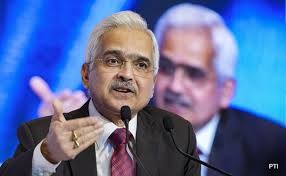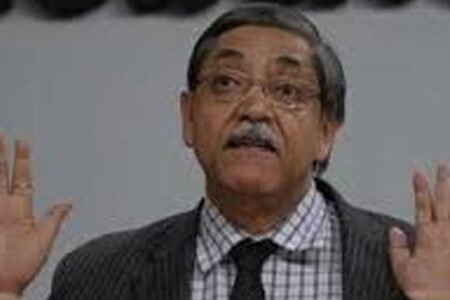Till Reserve Bank of India (RBI) Governor Shaktikanta Das said in his recent interviews that shifting of the stance of the monetary policy from neutral to accommodative itself means a rate cut of 25 basis points (bps) at least and, therefore, effectively, the rate cuts have been 100 bps, every analyst and his aunt were penciling yet another rate cut on August 7.
Even now, against the backdrop of the US Federal Reserve’s rather hawkish rate cut, a 25 bps drop in policy rate could be on the table in India as core inflation is modest, overall retail inflation remains below 4 per cent and there are telltale signs of growth slowing down. Had Das not made this comment, the expectation was building up for a 50 bps rate cut. (Considering the global developments, a few still feel that could happen.) One bps is a hundredth of a percentage point.
Let’s shift the focus from the policy rate and monetary transmission or the lack of it to the recent liquidity conundrum in the Indian financial system.
With non-banking finance companies (NBFCs) finding it difficult to raise money, the RBI has been infusing rupee liquidity into the system in right earnest. It has pumped in Rs 52,500 crore through the so-called open market operation (OMO) — buying bonds from banks and releasing money into the system. Besides diversifying its liquidity management toolkit, the central bank has also infused around Rs69,500 crore through three-year US$/INR buy-sell swap auctions in two tranches in March and April.
Finally in June, the central bank cut its policy rate yet again, the third in a row; changed the stance of the monetary policy and committed to ensure “adequate” liquidity for all productive purposes. As many NBFCs are not in a position to lend, banks need to step in and adequate liquidity can egg them on to lend and also pare loan rates. A series of RBI actions has changed the liquidity scenario – from deficit to a zone of surplus.
Till now, the narrative is quite straightforward. It takes a new turn with the RBI starting to intervene in the foreign exchange market to mop up dollar flow. This is adding to the liquidity in the system as for every dollar bought, an equivalent amount of rupee flows in. At the same time, the RBI has also been conducting sell-buy swaps, postponing the rupee liquidity infusion.
Simply put, on the one hand, the RBI has been injecting rupee liquidity through OMO purchases and US$/INR buy-sell swap auctions and, on the other, it is “sterilising” any rupee liquidity infusion following its dollar buying in the spot market. What is the result? A rise in forward premia and a spike in the implied INR rates that drives up the hedging cost for importers. This starkly contrasts the fall in yields of government bonds and other instruments.
To put things in perspective, the implied INR rates (annualised hedging cost) crossed 7 per cent briefly, up from 6.25 per cent, and is currently veering around 6.6 per cent while the one-year treasury bill yields have fallen. The hedging cost for two years and beyond has gone up more than half a percentage point in the past two months.
An unstated objective of the three-year $10 billion US$/INR buy-sell swaps was to bring down implied INR rates and hedging costs so that it makes the external financial window more accessible to borrowers. The recent RBI actions have negated the gains from the buy/sell swaps.
To be sure, the spike in the forward premia is also being caused by the new large exposure framework or LEF guidelines, effective April 1. The LEF requires banks to limit their exposure to individual entities. This constrains inter-bank trading activities and reduces market liquidity, especially at quarter ends.
While bond yields are going down, forward premiums are rising. The rise in hedging costs may inhibit the importers from taking cover. It can also make life difficult for those who want to borrow overseas.
Is the RBI sending conflicting signals? To be fair to the regulator, the RBI is facing the classic impossible trinity or trilemma: Can it have a fixed foreign exchange rate, an open capital market and independent monetary policy, targeting inflation? First, through OMO buying and US$/INR buy-sell swap auctions, the RBI had sent signals that they were relevant options before the central bank to infuse liquidity. When the dollar flow strengthened, it started buying the greenback. But if it does not sterilise the forward liabilities, it would end up injecting further liquidity when the system is already in surplus. Till April, the system was in a liquidity-deficit mode. In May, it turned surplus by an average of Rs 25,000 crore daily, which crossed Rs 1 trillion in June and went close to Rs 1.5 trillion in July.
We get to know the figures of the RBI’s dollar buying from the market with a lag. In January, the amount was $293 million which rose to $825 million in February and crossed $9 billion in March. In April, it was close to $5 billion and, in May, half of that.
As a result, the RBI’s foreign exchange reserves rose from around $412 billion in March-end to $430.4 billion in mid-July. The local currency, which hit an intra-day low of 70.64 to a dollar in mid-May, is trading at 69.60 (August 2 closing) after dropping to 68.27 in the first half of July. Had the RBI not bought dollars from the market, the rupee would have appreciated more, hitting exporters hard. The real effective exchange rate (REER), based on the weighted average of rupee in relation to a basket of currencies of 36 countries with which India has trade relations, has remained elevated between 118 and 119.5 in the past two months. (With the rupee crossing 70 to a dollar, this has changed now.)
If the RBI does not buy dollars, the rupee will appreciate further; if it does not sterilise the rupee liquidity (generated out of dollar buying) through sell-buy swaps, and postpones the rupee liquidity infusion, the flood of liquidity will pull down domestic rates. The 10-year government bond yield, which was 7.5 per cent in the third week of April, dropped to 6.25 per cent in mid-July. (It has risen from that level for different reasons.) The RBI has a Hobson’s choice: Between a harder forward premium and a collapse in the domestic rates. It has opted for the first.
The other option could have been a sale of bonds through OMO to suck out liquidity but that would send a wrong signal to the market because till recently the RBI was buying bonds. Yet another option is stamping out liquidity through short-term cash management bills under the so-called market stabilisation scheme (MSS). The RBI has used this in the past. Here, the central bank has the flexibility to time the release of money in the future. The bonds floated under MSS are not used to bridge the fiscal deficit but the government bears the cost. That could be a sore point. Since the RBI is concerned about monetary transmission, it can also raise the acceptable threshold limit for systemic liquidity.
While the RBI’s actions are disrupting the foreign exchange market in sync with the market dynamics, the strategies need to change to deal with shocks. Ideally, the RBI should junk the OMO calendar and conduct such auctions nimbly, say, at a two-day horizon. Will the RBI use the latest monetary policy as a platform to deal with this? Of course, the latest global developments are changing the dynamics fast…



